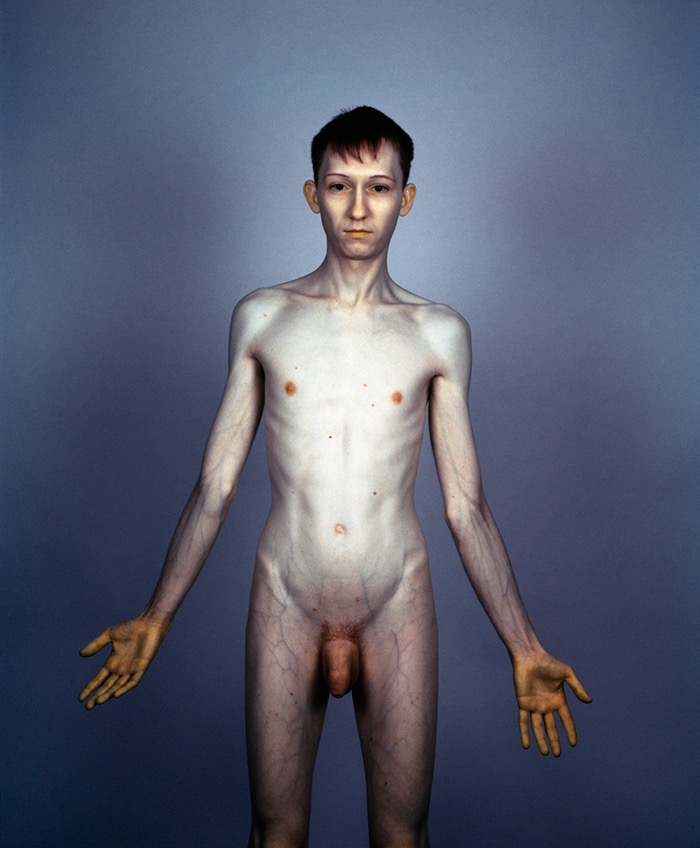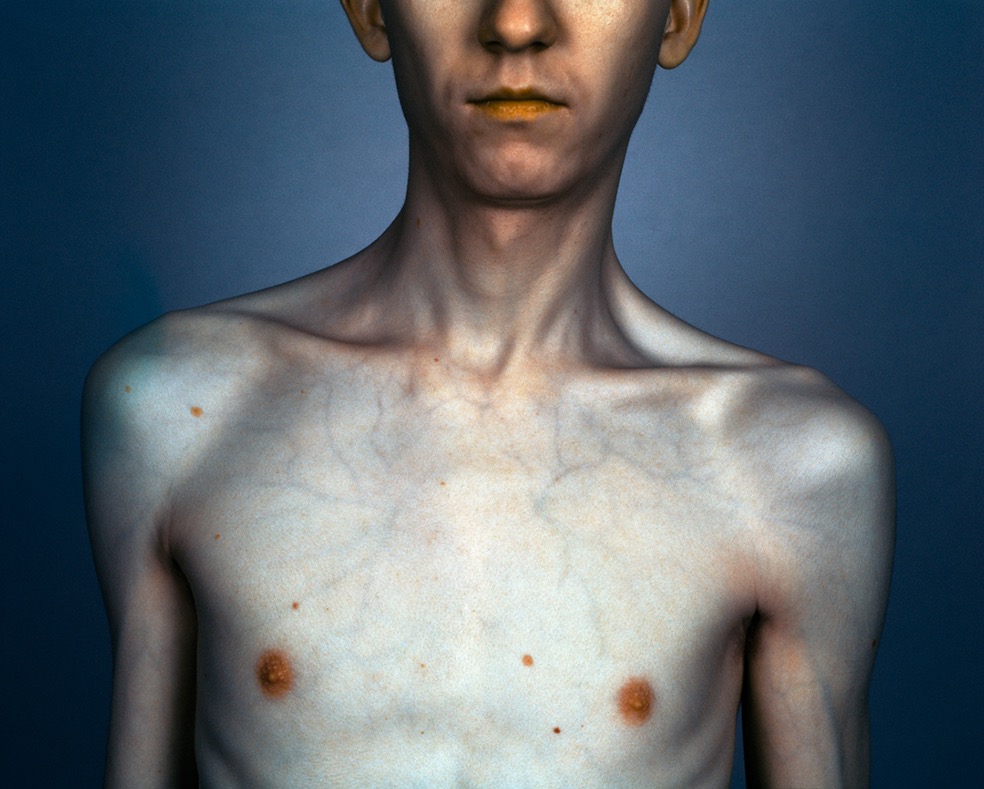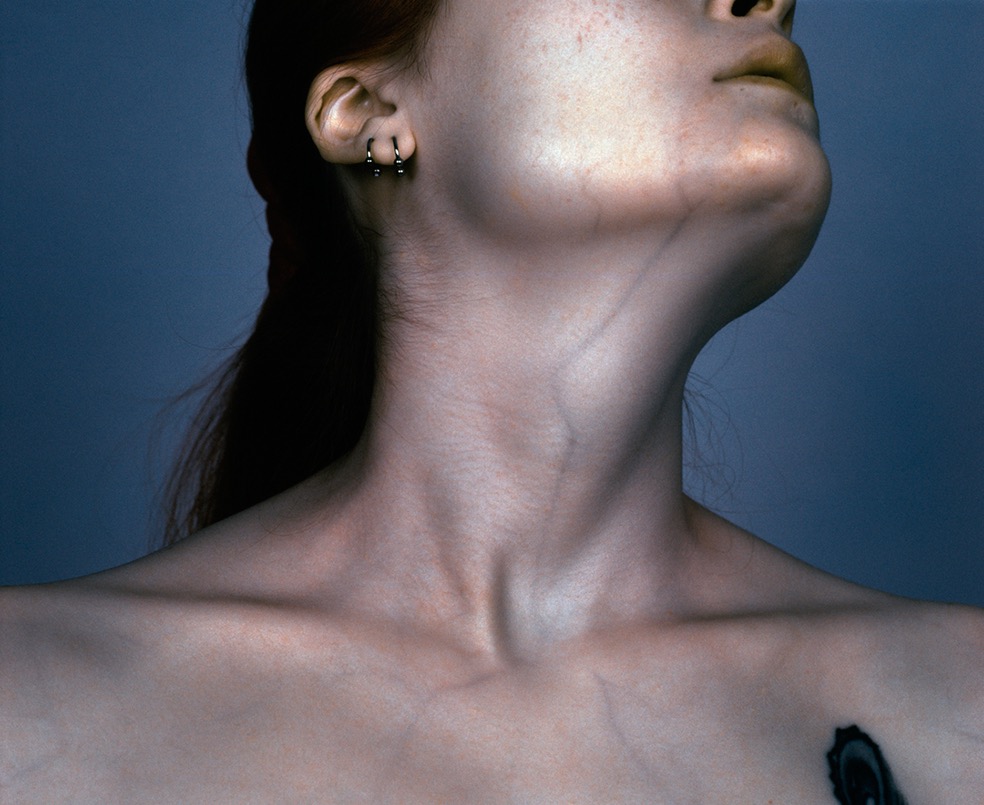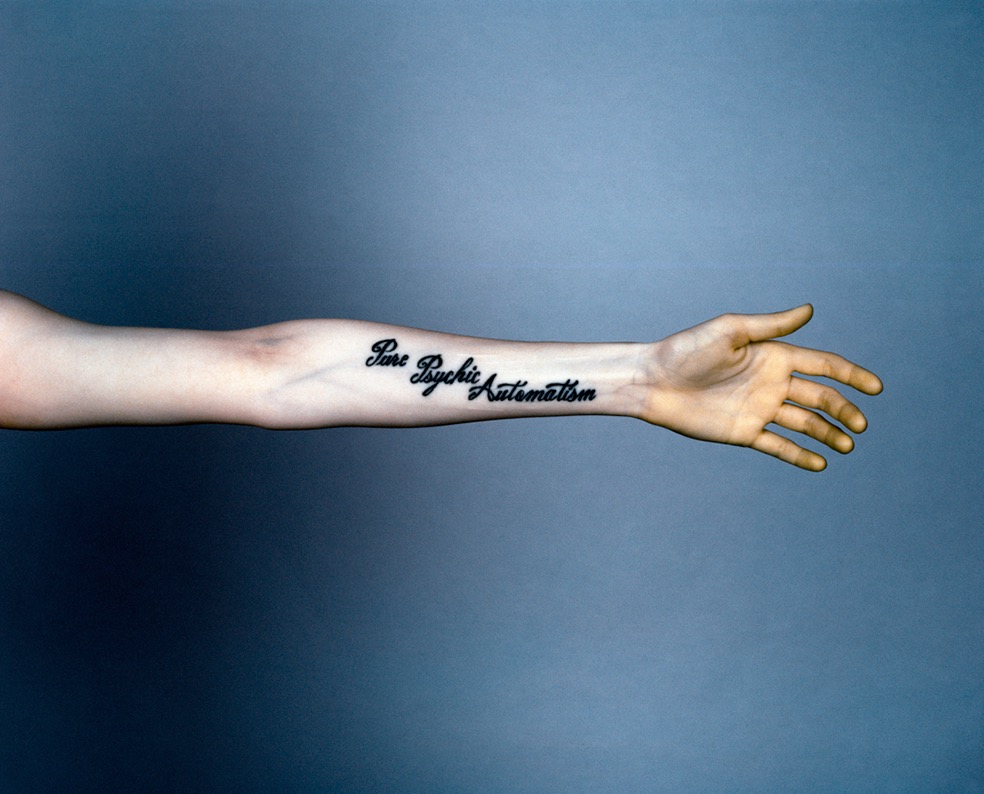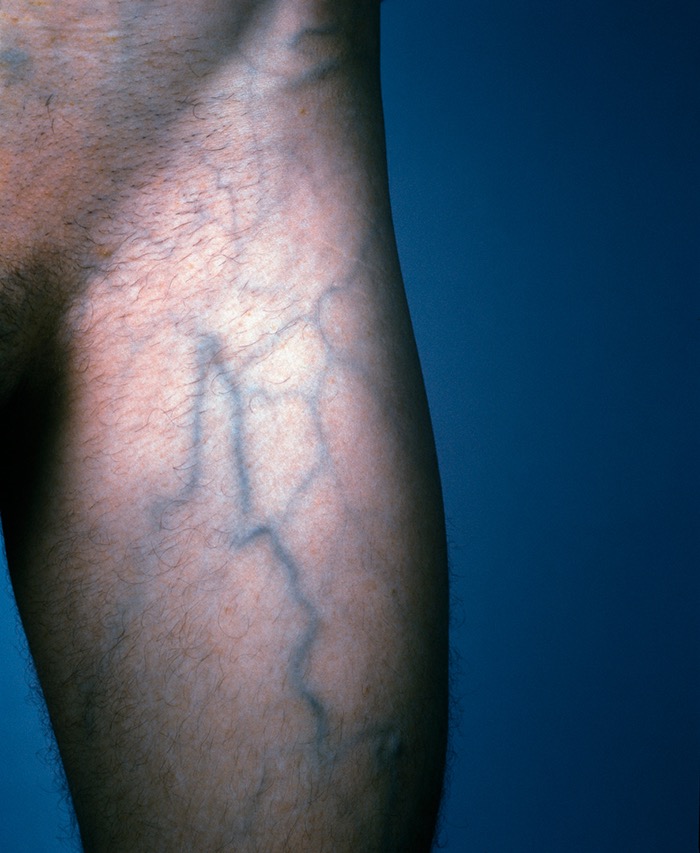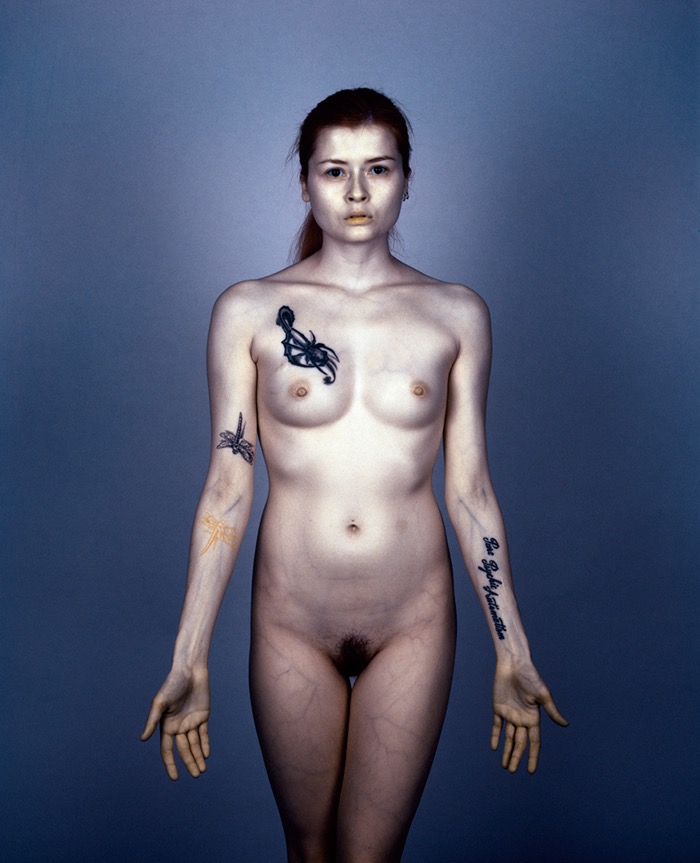About his project Edward says: The process of photographing veins was pioneered by Leo Massopust, who spent his working life at Marquette University School of Medicine as medical artist and photographer. In 1936 in the journal Surgery, Gynecology and Obstetrics, he published a paper on ‘Infrared photographic study of the changing pattern of the superficial veins in the case of human pregnancy .’ But it was not until 1944 that this technique of viewing the superficial veins by infrared was used by Dr Lou Gibson to detect tumours.
From 1945 Dr Gibson, a consultant in medical, biological, scientific, and technical photography for the Eastman Kodak Company, started experimenting with infrared photography and in 1961 he published a paper which demonstrated how the superficial venous pattern in a 12-year-old girl became greatly intensified following lunch . Dr Gibson presented this intriguing anomaly in the hope that others would attempt to use infrared to investigate other abnormalities in the vascular system. Although I was keen to try and replicate the experiments completely, I chose not to photograph 12-year-olds as subjects, because I didn’t want the sensationalism to distract from the project. By 1963 Dr Gibson was highlighting patients’ veins via the technique of infrared luminescence, which illuminates the subject with visible radiation and then records the luminescence in the infrared part of the spectrum. Dr Gibson presented extensive details of the technique and then its application to a wide range of medical and biological subjects. This process was used in the assessment of tumours and cancers . In the screening of breast cancer, the infrared would show the venous patterns of the chest, and if the veins had predominantly asymmetrical patterns, it was considered to be an indicator.
Photographic nudes started being produced in the mid-19th century when painters and printmakers created photographic studies of form for their fellow artists. These portraits soon became very popular as a form of soft-core pornography to the wider public in their own right, which then led to eroticism being hidden within art and the transition of pornography from a literary to a visual medium.
Since then, the representation of the nude has permeated every part of our culture and strangely, in a seemingly liberal culture, held onto its status as a taboo. In the 21st century, images of death and dismemberment are shared widely on social media, but a nipple is considered obscene.
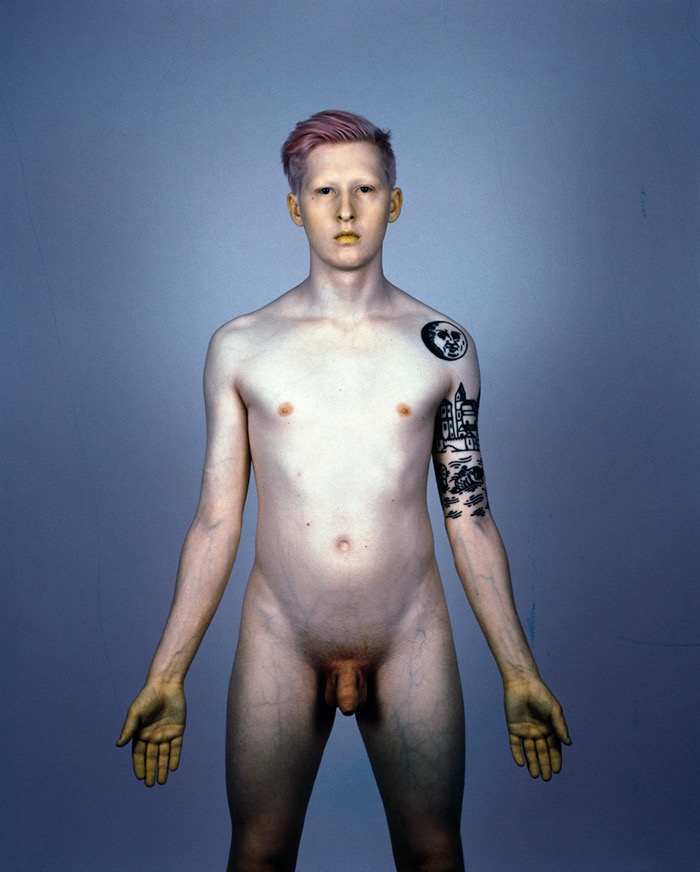
In The Vein, the photographic nude has been approached with long-forgotten medical photographic techniques, pioneered by Leo Massopust in 1936 . After investigating this technique further, I created a series of nude portraits. The non-sexualised pose and gaze of the models is a result of the adoption of poses devised by another scientist, Dr Lou Gibson, for the infrared photography of superficial veins. They are functional poses, the forearms turned to reveal the thinner skinned inner side, making the veins easier to distinguish. The pose itself is a timeless one that has been used for millennia in nearly every culture to express openness and vulnerability, the hands out-turned gesture.
The veins, now visible, challenge the conventional beauty of the nude. The overly photoshopped and hyper-real nudity that is depicted in advertising and pornography is challenged directly by a photographic medium (infrared) that alters our perception of the model, rather than a post-production technique (photoshop) that alters the models themselves. By seeing the veins within the nude portrait, visualising the inner workings of the circulatory system with the naked eye, it makes the viewer of the photographs more aware of the subject’s fragile ephemerality. A notion that is the antithesis of the nude as commodity in advertising and pornography.
The project is a part of The Unseen: An Atlas of Infrared Plates book – ORDER BOOK HERE
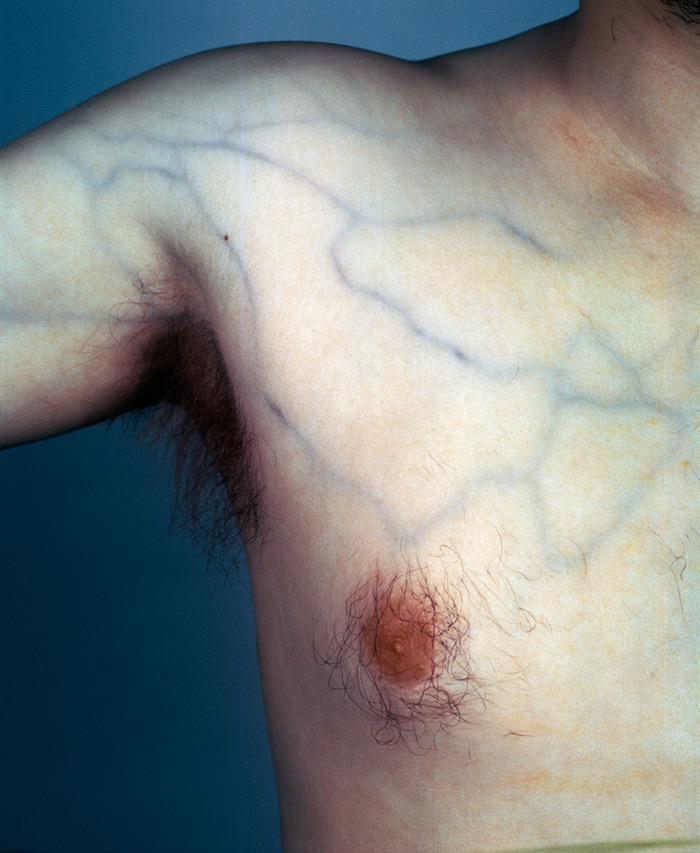
Edward Thompson is a British photographer, artist and lecturer. His own photographic work has focused on various subjects over the years from covering environmental issues, socio-political movements, subcultures and the consequences of war. He developed a distinctive style from an early apprenticeship with the Russian photographer Sergey Chilikov, whom he met at the Arles Photography Festival in 2002. That summer he stayed with Sergey in Paris and learnt the value of shooting everyday life, Sergeys friend, Gueorgui Pinkhassov, told him how the everyday can allow you to touch at something great.
His documentary photo-essays have been published in international magazines including National Geographic Magazine, Newsweek Japan, Greenpeace Magazine, The Guardian Weekend Magazine, BBC, CNN and The Sunday Times Magazine. His work has been exhibited at Christies, Somerset House and Four Corners Gallery (London) and shown as part of photography festivals in Arles (France), Tampere (Finland), Zingst (Germany) & London (U.K). He has lectured on photography at the V&A Museum, The Photographers Gallery, The Bishopsgate Institute, L.C.C, The University of Falmouth, The University of Northampton and The University of East London. He speaks regularly on photography on television, radio and online, including on Al Jazeera News and the BBC World Service. He has published The Unseen: An Atlas of Infrared Plates and founded The School of Punktum for skint and talented photographers.
Website: edwardthompson.co.uk
